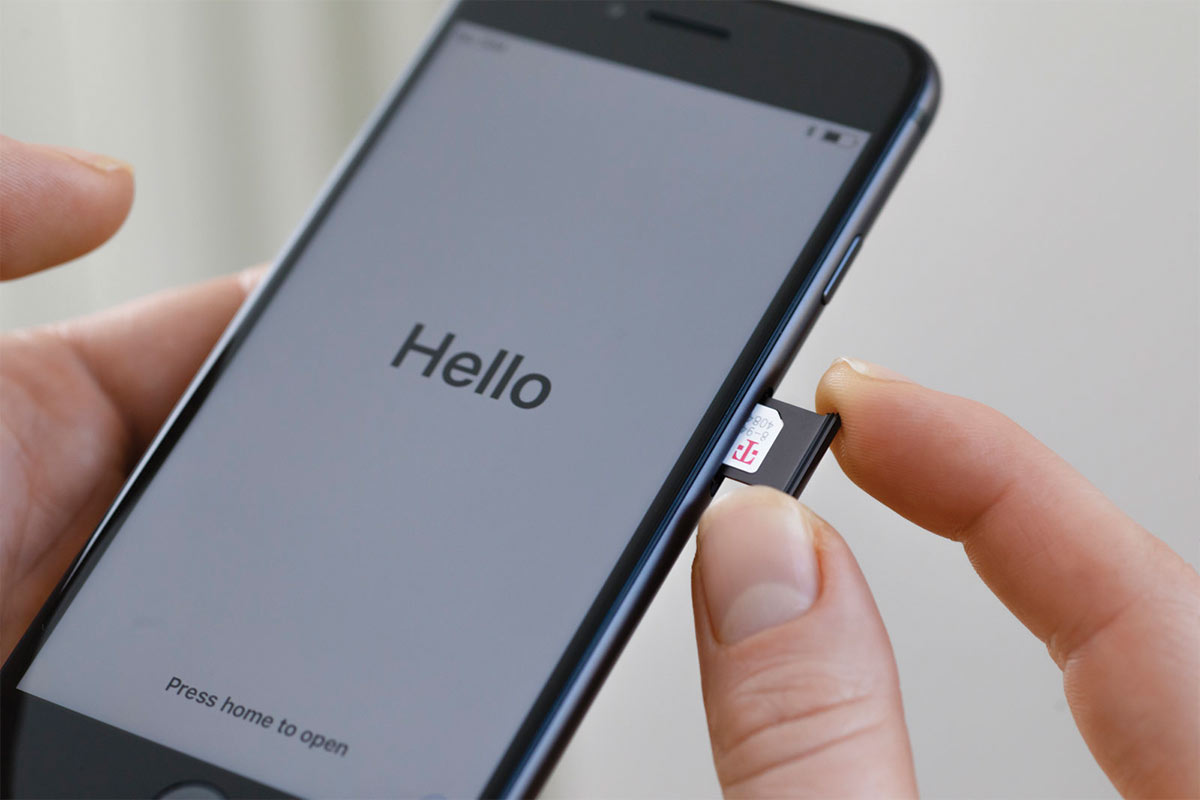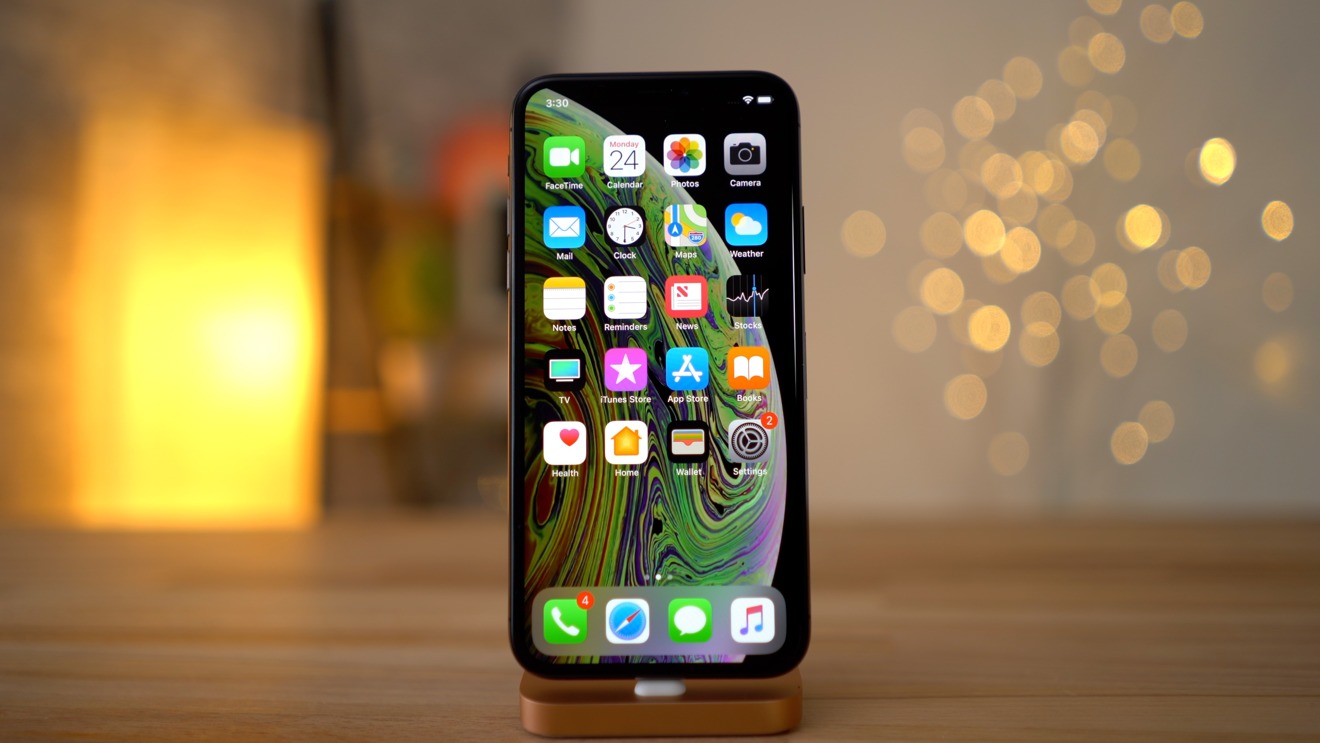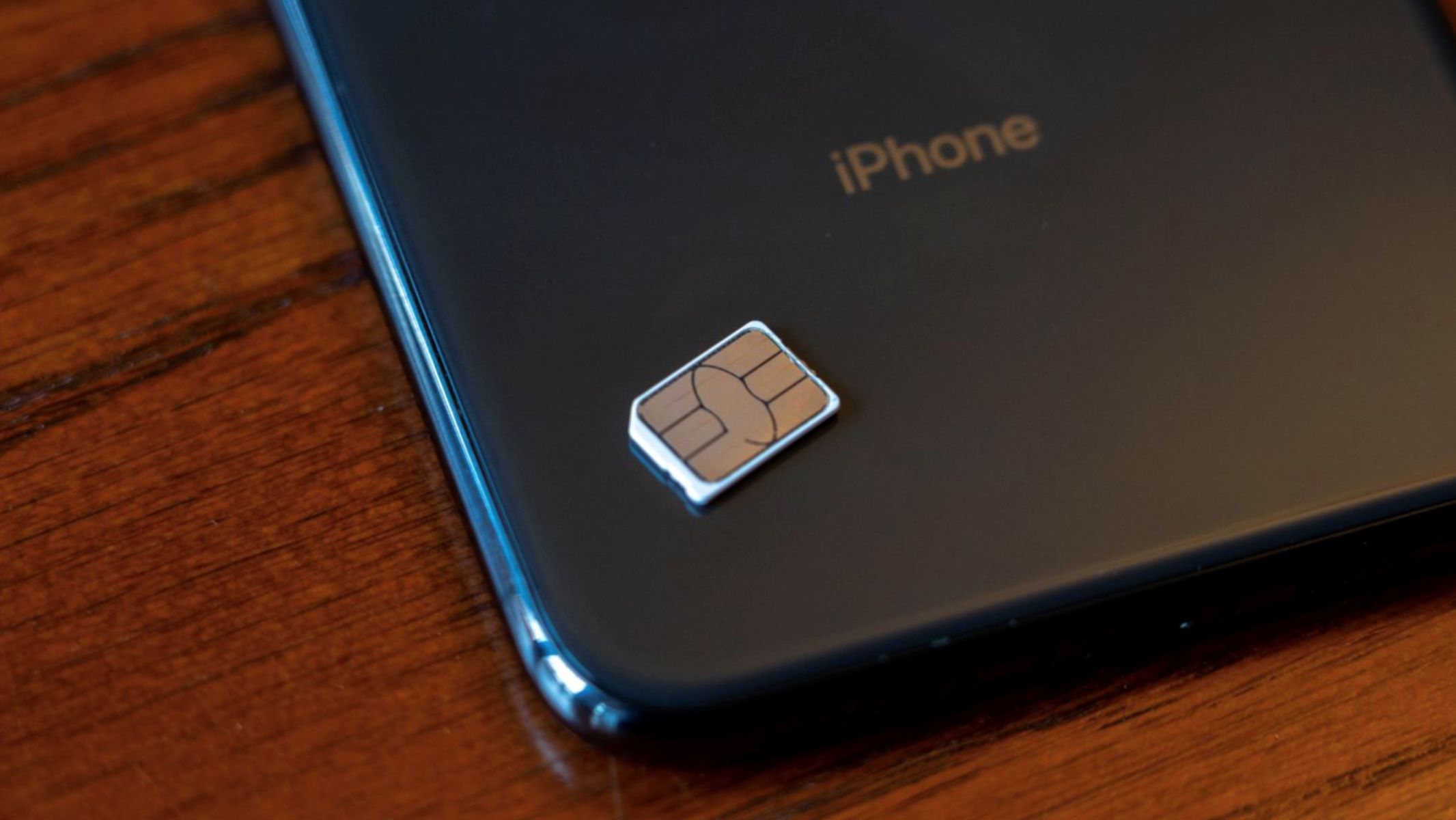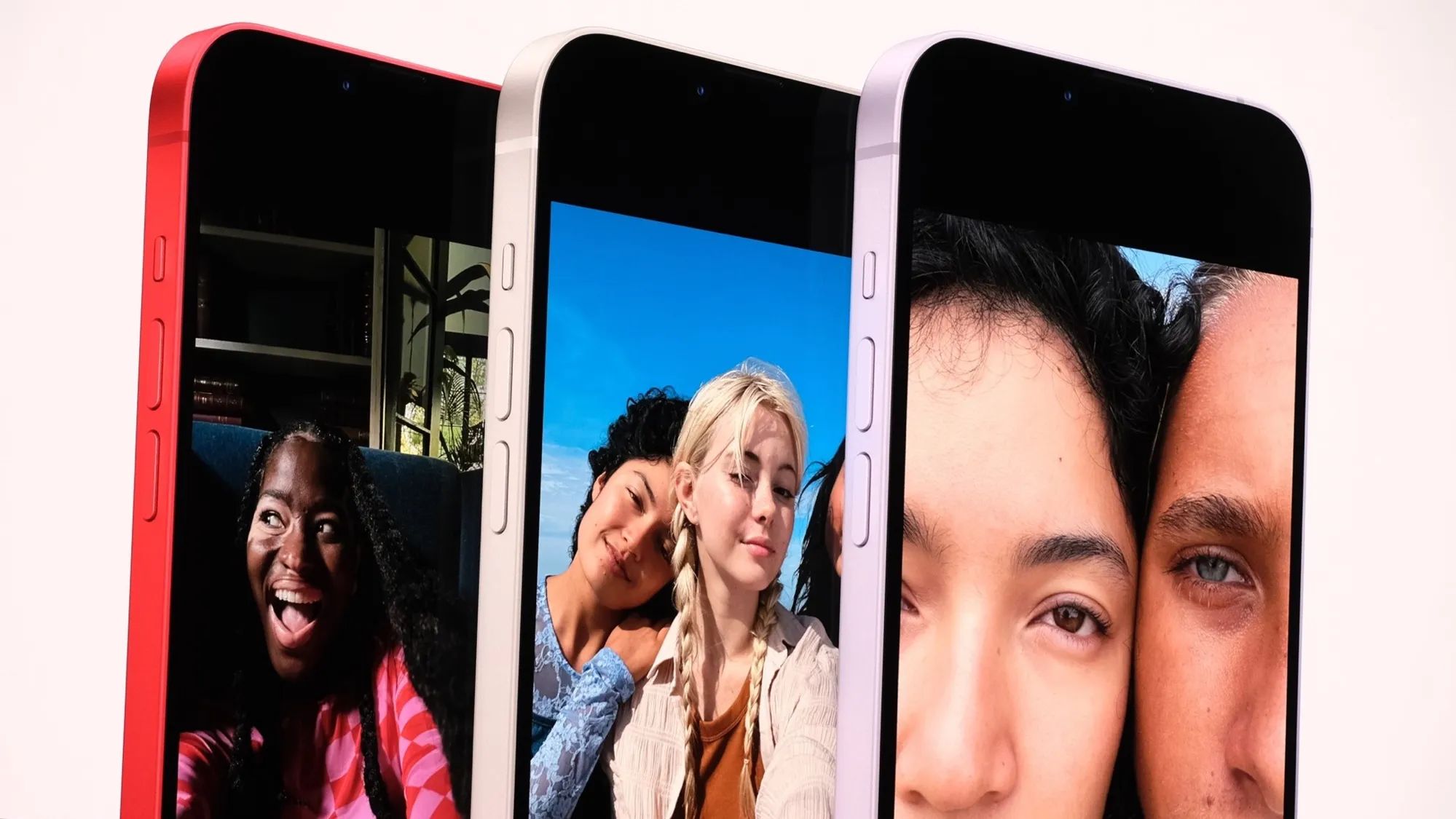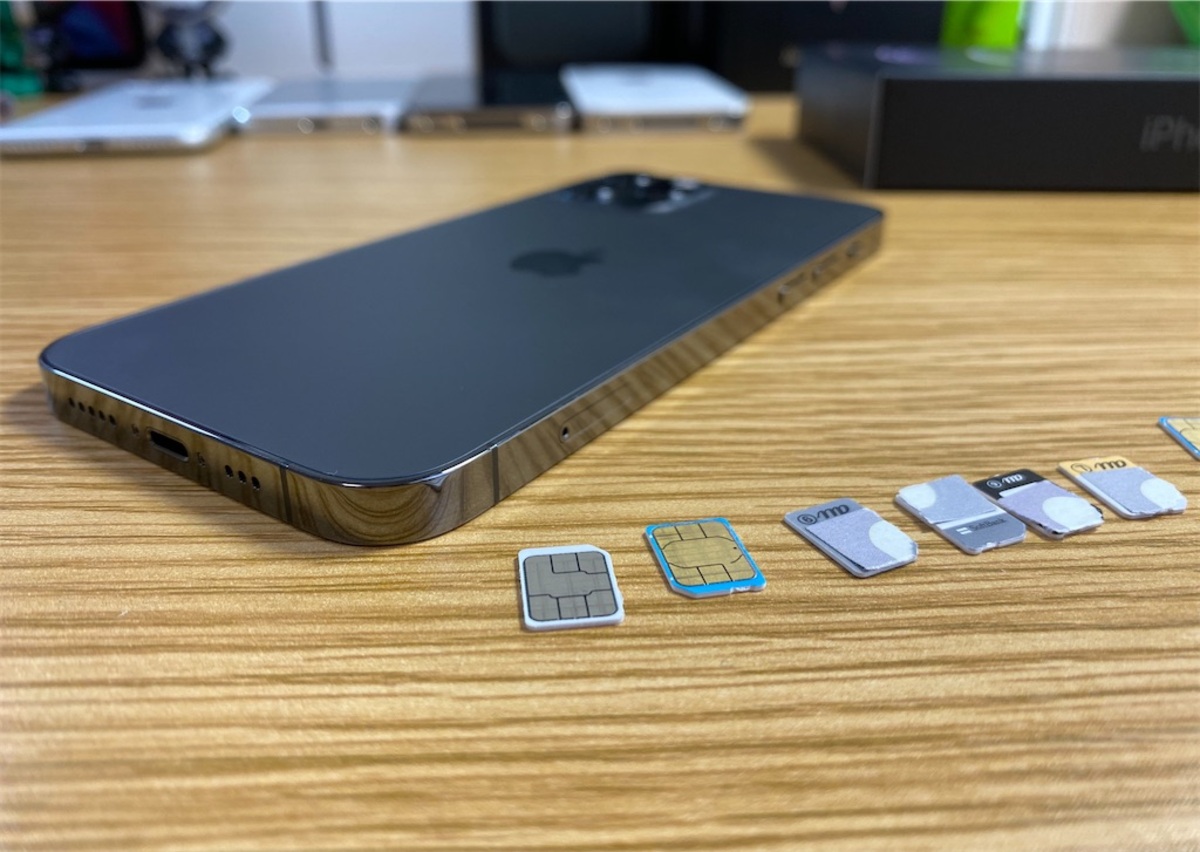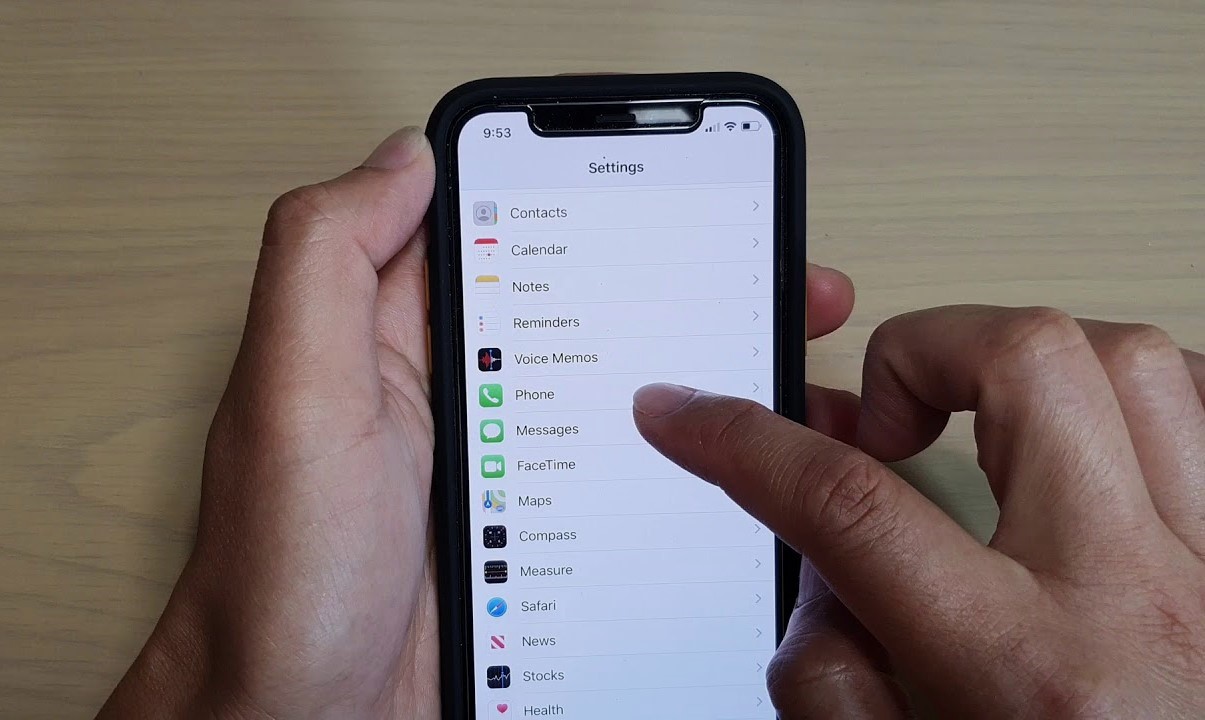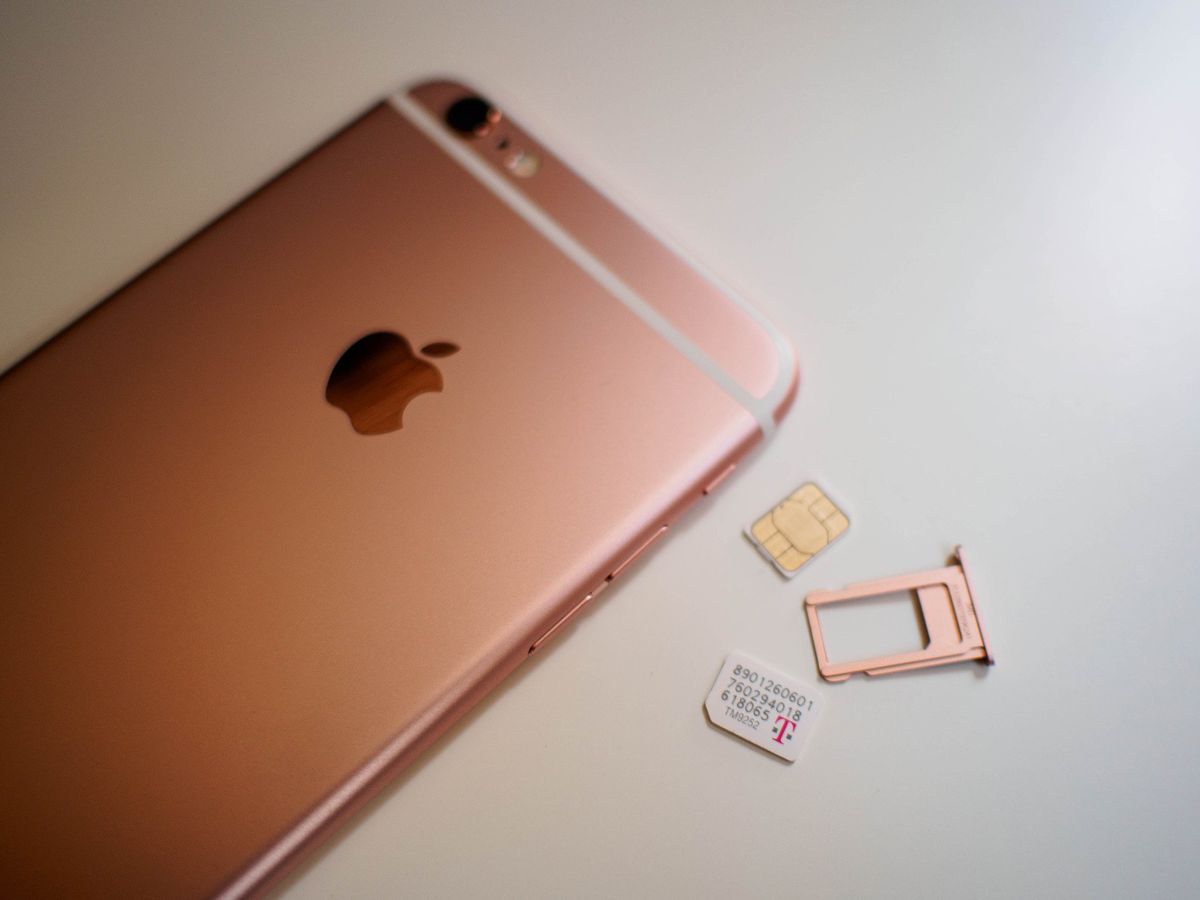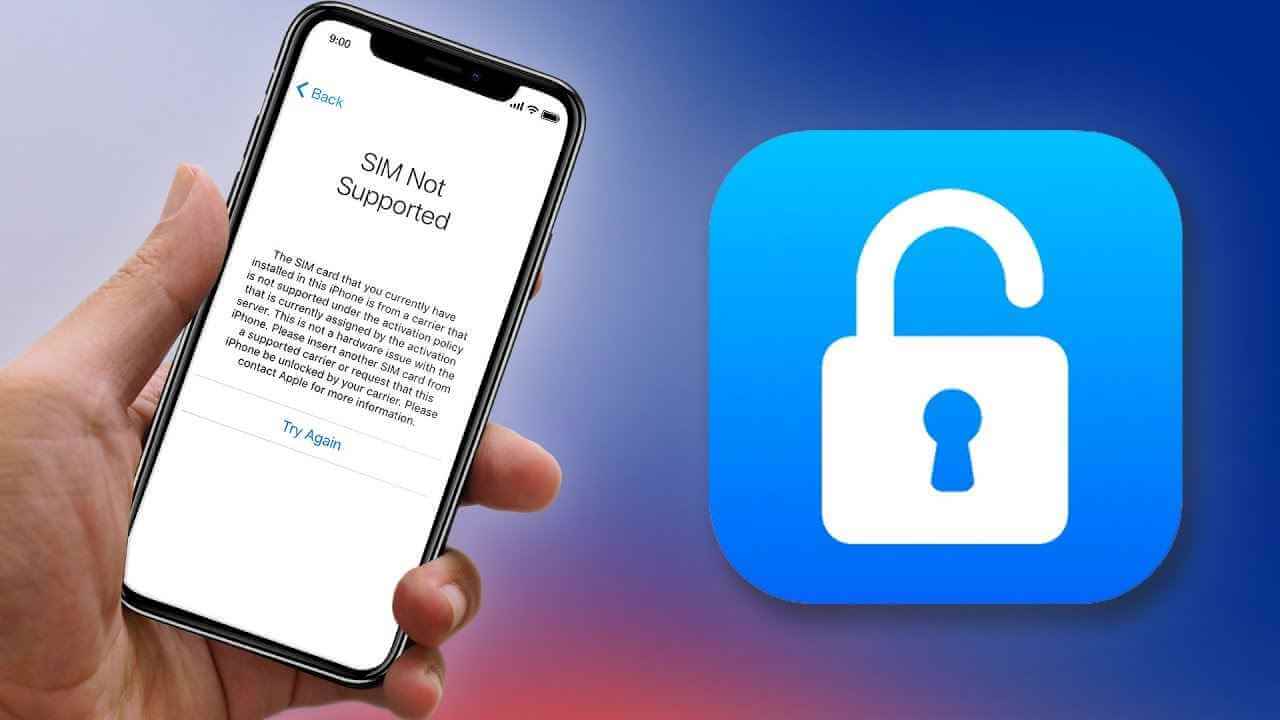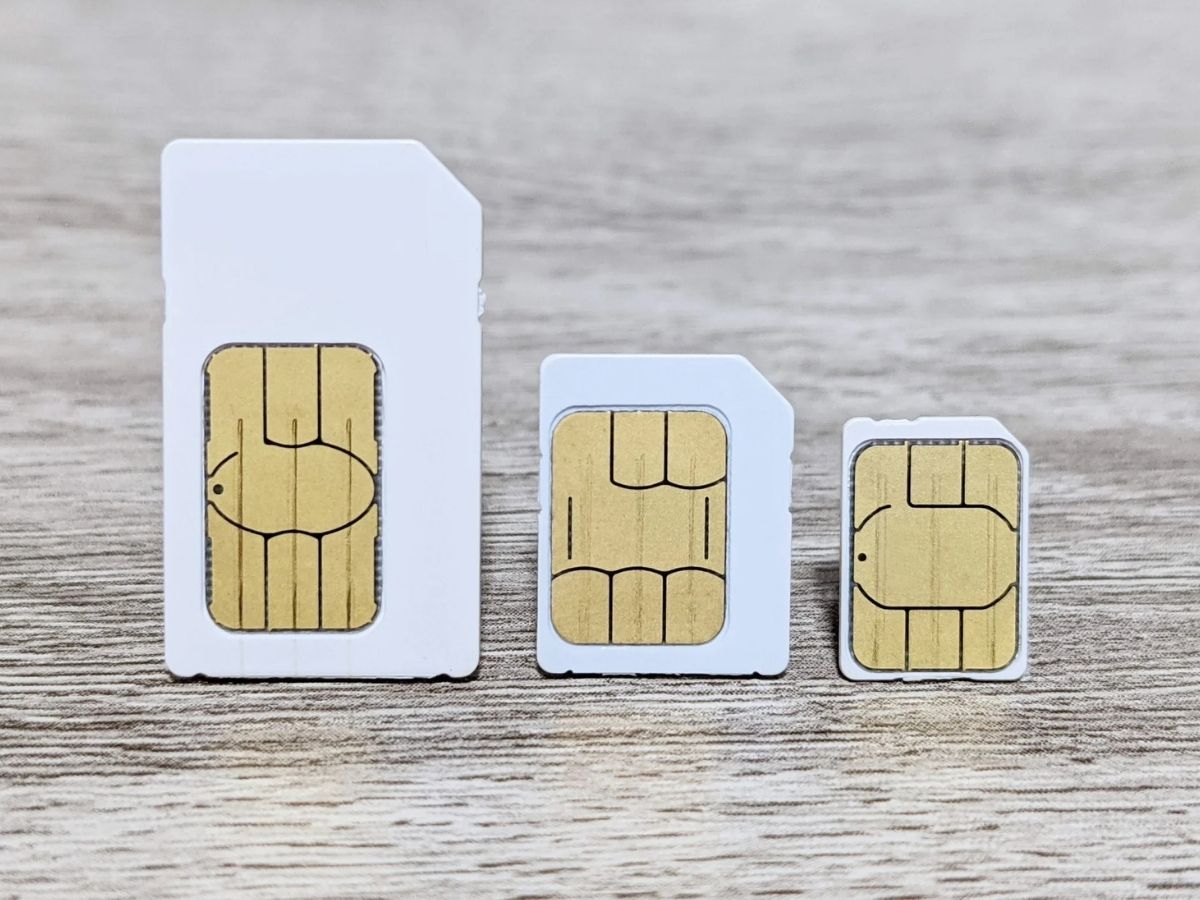Introduction
The tiny, unassuming SIM card that resides within your iPhone plays a pivotal role in enabling communication and connectivity. While it may appear insignificant, its significance cannot be overstated. Understanding the functions, types, and maintenance of iPhone SIM cards is essential for every user.
The SIM card, short for Subscriber Identity Module, serves as a unique identifier for your iPhone within a mobile network. It contains crucial information, such as the International Mobile Subscriber Identity (IMSI) and the authentication key, which are essential for connecting to a cellular network. Without a functioning SIM card, your iPhone would be unable to make calls, send text messages, or access mobile data.
In this comprehensive guide, we will delve into the intricacies of iPhone SIM cards, shedding light on their types, installation methods, activation processes, and troubleshooting techniques. Whether you are a seasoned iPhone user or a newcomer to the iOS ecosystem, this article will equip you with the knowledge and skills necessary to navigate the realm of SIM cards with confidence.
Let's embark on a journey to unravel the mysteries surrounding iPhone SIM cards, empowering you to harness their full potential and troubleshoot any issues that may arise. By the end of this guide, you will possess a comprehensive understanding of the indispensable role played by SIM cards in the seamless functioning of your iPhone.
What is a SIM Card?
A SIM card, or Subscriber Identity Module, is a small, removable card that is inserted into your iPhone and serves as its unique identifier within a mobile network. It contains essential information that facilitates the seamless functioning of your device within a cellular network. The primary purpose of a SIM card is to authenticate your iPhone on the network, enabling it to make calls, send text messages, and access mobile data.
The SIM card holds crucial details, including the International Mobile Subscriber Identity (IMSI), which uniquely identifies your iPhone within the network, and the authentication key, which validates your device's access to the network. Additionally, the SIM card stores information related to your cellular plan, such as your phone number and network-specific settings.
SIM cards come in various sizes, including standard SIM, micro-SIM, and nano-SIM, with each iteration designed to accommodate the evolving form factors of mobile devices. The standard SIM card, which was prevalent in earlier generations of mobile phones, has since been succeeded by the smaller micro-SIM and the even more compact nano-SIM, which is the standard for modern iPhones.
One of the most significant features of a SIM card is its portability. When you upgrade to a new iPhone or switch to a different mobile device, you can simply remove the SIM card from your existing phone and insert it into the new one, seamlessly transferring your cellular identity and plan details. This flexibility underscores the importance of the SIM card as a portable and transferable component of your mobile connectivity.
In essence, the SIM card serves as the gateway to the cellular network for your iPhone, enabling it to establish communication with other devices, access voice and data services, and operate seamlessly within the realm of mobile connectivity. Its compact size belies its profound significance, making it an indispensable component of your iPhone's functionality.
Types of iPhone SIM Cards
When it comes to iPhone SIM cards, there are several variations tailored to accommodate the evolving design and form factor of Apple's iconic devices. Understanding the different types of iPhone SIM cards is crucial for ensuring compatibility and seamless functionality. Let's explore the distinct iterations of iPhone SIM cards:
1. Standard SIM Card:
The standard SIM card, also known as a full-size SIM, was the predominant form factor in earlier generations of mobile devices, including the early models of the iPhone. This SIM card measures approximately 25mm x 15mm and features a larger surface area compared to its successors. While modern iPhones no longer utilize the standard SIM card, it remains relevant for older devices and serves as a historical precursor to the more compact iterations.
2. Micro-SIM Card:
As mobile devices underwent a phase of miniaturization, the micro-SIM card emerged to accommodate the shrinking dimensions of smartphones, including the iPhone 4 and iPhone 4S. The micro-SIM, measuring around 15mm x 12mm, presented a reduced form factor while retaining the essential functionality of its larger predecessor. Apple's adoption of the micro-SIM marked a pivotal transition in SIM card design, reflecting the company's commitment to sleek and space-efficient device architecture.
3. Nano-SIM Card:
The nano-SIM card represents the current standard for modern iPhones, including the iPhone 5 and subsequent models. With dimensions of approximately 12.3mm x 8.8mm, the nano-SIM embodies a significant reduction in size compared to its predecessors, underscoring Apple's dedication to maximizing internal space within its devices. The adoption of the nano-SIM facilitated the design of slimmer and more compact iPhones, while retaining the essential functionality of its larger counterparts.
4. eSIM (Embedded SIM):
In addition to traditional physical SIM cards, certain iPhone models support eSIM technology, which eliminates the need for a physical SIM card altogether. The eSIM, integrated directly into the device's hardware, offers a streamlined approach to mobile connectivity, enabling users to activate cellular plans and switch carriers without the need for a physical SIM card. This innovation aligns with Apple's pursuit of technological advancement and seamless user experience, further enhancing the versatility of iPhone connectivity.
Understanding the evolution of iPhone SIM cards underscores the iterative nature of mobile technology, with each iteration reflecting advancements in design, functionality, and user experience. By recognizing the distinct types of iPhone SIM cards and their compatibility with specific device models, users can navigate the landscape of mobile connectivity with confidence and adaptability.
How to Insert and Remove a SIM Card in an iPhone
Inserting or replacing a SIM card in your iPhone is a straightforward process, essential for activating cellular connectivity and ensuring seamless communication. Whether you are setting up a new iPhone or switching to a different SIM card, the following steps will guide you through the process of inserting and removing a SIM card with ease:
Inserting a SIM Card:
-
Locate the SIM Card Tray: Depending on your iPhone model, the SIM card tray is typically located on the side of the device. Use the provided SIM eject tool, a paperclip, or a small, pointed object to gently press the SIM card tray's eject button, allowing the tray to pop out.
-
Remove the SIM Card Tray: Once the SIM card tray is ejected, carefully pull it out of the device using your fingers or a gentle pulling motion. Be mindful of the tray's orientation to avoid damaging the SIM card slot.
-
Place the SIM Card: If you are inserting a new SIM card, position it on the tray in alignment with the designated area, ensuring that the gold contacts on the SIM card are facing downward. For existing SIM cards, carefully transfer it to the new device without bending or damaging the delicate contacts.
-
Reinsert the SIM Card Tray: With the SIM card securely positioned on the tray, gently slide the tray back into the device until it clicks into place. Ensure that the tray is flush with the iPhone's exterior, maintaining a seamless and secure fit.
Removing a SIM Card:
-
Eject the SIM Card Tray: To remove an existing SIM card, follow the initial steps to eject the SIM card tray from the iPhone, ensuring that the device is powered off before proceeding.
-
Carefully Remove the SIM Card: Once the tray is accessible, gently lift the existing SIM card from the tray, handling it with caution to avoid damaging the delicate contacts. Place the removed SIM card in a safe location, especially if it will be reinserted into the same or another device.
By following these simple yet crucial steps, you can confidently manage the insertion and removal of SIM cards in your iPhone, facilitating seamless connectivity and ensuring that your device is equipped with the necessary credentials to access cellular networks. Whether upgrading to a new iPhone or replacing a SIM card, mastering this fundamental process empowers you to maintain uninterrupted communication and mobile connectivity.
These steps are designed to accommodate various iPhone models, including the latest iterations, ensuring a consistent and user-friendly experience across the diverse spectrum of Apple devices. With this knowledge at your disposal, you can effortlessly manage the SIM card ecosystem within your iPhone, harnessing its full potential for seamless communication and connectivity.
Activating a SIM Card for an iPhone
Activating a SIM card is a pivotal step in unleashing the full potential of your iPhone's cellular connectivity. Whether you are setting up a new device or transitioning to a different cellular plan, the activation process is essential for establishing seamless communication and network access. Here's a detailed guide to activating a SIM card for your iPhone:
1. Power on Your iPhone:
Begin by powering on your iPhone and allowing it to initialize. If you are setting up a new device, follow the on-screen prompts to proceed to the activation stage. For existing iPhones, ensure that the device is powered on and ready for the activation process.
2. Insert the SIM Card:
If you have not yet inserted the SIM card into your iPhone, carefully follow the steps outlined in the previous section to insert the SIM card into the designated tray. Once the SIM card is securely in place, proceed to the next steps.
3. Connect to a Wi-Fi Network:
To initiate the activation process, ensure that your iPhone is connected to a Wi-Fi network. This connection is essential for accessing the necessary activation servers and completing the setup seamlessly.
4. Follow the On-Screen Prompts:
Upon establishing a Wi-Fi connection, your iPhone will prompt you to begin the activation process. Follow the on-screen instructions, which may include entering your SIM card's activation code or confirming your cellular plan details.
5. Verify Activation Status:
After entering the required information, your iPhone will proceed with the activation process, communicating with the cellular network to authenticate the SIM card and establish connectivity. Monitor the on-screen indicators to verify the successful activation of your SIM card.
6. Test Communication and Data Access:
Once the activation process is complete, test your iPhone's communication capabilities by making a test call and sending a text message. Additionally, verify your access to mobile data by opening a web browser or accessing an online service. These tests confirm that your SIM card is fully activated and functioning as intended.
By following these steps, you can seamlessly activate a SIM card for your iPhone, ensuring that your device is equipped with the necessary credentials to access cellular networks and unlock its full communication potential. This activation process is essential for new iPhones and when transitioning to a new cellular plan, enabling you to harness the power of mobile connectivity with ease.
Whether you are a new iPhone user or upgrading to a different device, mastering the activation process empowers you to seamlessly integrate your iPhone into the cellular network, facilitating uninterrupted communication and data access. With these insights, you can confidently navigate the activation of SIM cards for your iPhone, maximizing its functionality within the realm of mobile connectivity.
Troubleshooting SIM Card Issues
Encountering issues with your iPhone's SIM card can disrupt essential communication and connectivity functions. When faced with SIM card-related challenges, it is crucial to employ effective troubleshooting techniques to identify and resolve the underlying issues. Here's a comprehensive guide to troubleshooting SIM card issues on your iPhone:
1. Check SIM Card Placement:
Ensure that the SIM card is correctly inserted into the designated tray, with the gold contacts aligned and making proper contact with the SIM card slot. If the SIM card appears misaligned or improperly seated, carefully remove and reinsert it, ensuring a secure and snug fit within the tray.
2. Verify Network Coverage:
If you are experiencing connectivity issues, confirm that your iPhone is within an area with adequate network coverage. Weak or intermittent network signals can impact the performance of your SIM card, leading to call drops, slow data speeds, or intermittent service.
3. Restart Your iPhone:
Perform a soft reset of your iPhone by powering it off and then turning it back on. This simple yet effective step can resolve temporary software glitches that may be affecting the functionality of your SIM card and its interaction with the cellular network.
4. Update Carrier Settings:
Check for available carrier settings updates by navigating to Settings > General > About on your iPhone. If updates are available, follow the on-screen prompts to install the latest carrier settings, which can address compatibility issues and optimize the performance of your SIM card within the cellular network.
5. Reset Network Settings:
Navigate to Settings > General > Reset and select "Reset Network Settings." This action clears your iPhone's network configuration, including Wi-Fi, cellular, and Bluetooth settings, and can resolve persistent connectivity issues related to your SIM card.
6. Inspect the SIM Card:
Carefully examine the SIM card for any signs of physical damage, such as scratches, dents, or corrosion on the gold contacts. If the SIM card appears damaged, contact your carrier for a replacement SIM card to restore seamless functionality.
7. Contact Your Carrier:
If troubleshooting steps do not resolve the SIM card issues, reach out to your carrier's customer support for further assistance. They can provide insights into network-related issues, examine your account for any service disruptions, and offer guidance on resolving persistent SIM card challenges.
By systematically addressing SIM card issues through these troubleshooting steps, you can effectively diagnose and resolve connectivity, network, or hardware-related issues that may impact the performance of your iPhone's SIM card. This proactive approach empowers you to maintain uninterrupted communication and seamless connectivity, ensuring that your iPhone operates at its full potential within the cellular ecosystem.
Conclusion
In conclusion, the SIM card stands as a fundamental component in the realm of iPhone connectivity, serving as the gateway to seamless communication, network access, and mobile data utilization. Through its evolution from the standard SIM to the nano-SIM and the innovative eSIM technology, the iPhone SIM card has adapted to the shifting landscape of mobile device design and connectivity requirements.
This comprehensive guide has shed light on the intricacies of iPhone SIM cards, from their essential functions to the diverse types tailored to accommodate varying device form factors. Understanding the nuances of SIM card installation, activation, and troubleshooting equips users with the knowledge and skills necessary to navigate the complexities of mobile connectivity with confidence and adaptability.
By mastering the art of inserting and removing SIM cards, users can seamlessly transition between devices and cellular plans, ensuring uninterrupted access to voice, text, and data services. The activation process serves as the gateway to unleashing the full potential of the SIM card, enabling iPhones to establish a secure and authenticated connection within the cellular network.
Furthermore, the troubleshooting techniques outlined in this guide empower users to address SIM card-related challenges proactively, mitigating connectivity disruptions and optimizing the performance of their iPhones within the cellular ecosystem. From verifying network coverage to updating carrier settings and inspecting the SIM card for physical damage, these troubleshooting steps offer a systematic approach to resolving SIM card issues effectively.
As technology continues to evolve, the role of the SIM card remains integral to the seamless functioning of iPhones, underpinning their connectivity and communication capabilities. Whether navigating the transition to a new device, activating a SIM card for the first time, or addressing connectivity challenges, the insights presented in this guide empower users to harness the full potential of their iPhones within the dynamic landscape of mobile connectivity.
In essence, the iPhone SIM card encapsulates the essence of portable and versatile connectivity, embodying the seamless integration of technology into the fabric of everyday life. By understanding its functions, types, and maintenance, users can embark on a journey of seamless communication and connectivity, underpinned by the unassuming yet indispensable SIM card nestled within their iPhones.







